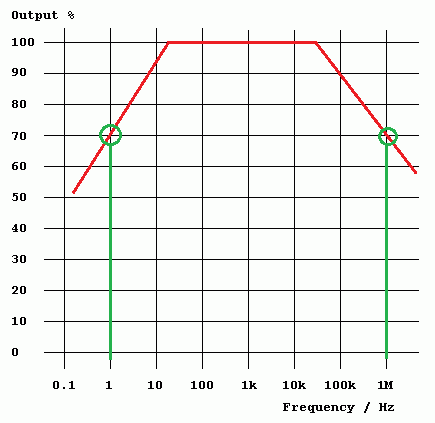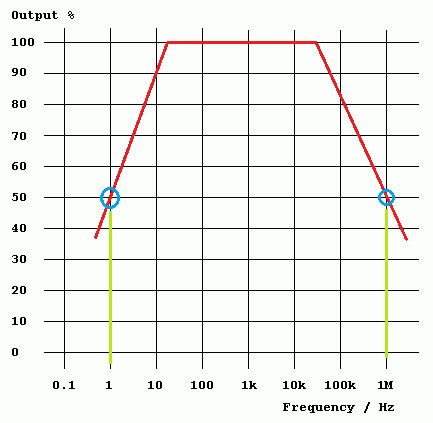

Op Amp Gain |
|
To gain access to revision questions, please sign up and log in.
Gain is a number (with no units) used to describe how much bigger a signal becomes when it is amplified.

This is the range of frequencies where the amplifier output VOLTAGE is at least 70% of the maximum amplifier output.
The graph shows the bandwidth going from 1Hz up to 1 MHz.

This is the range of frequencies where the amplifier output POWER is at least 50% of the maximum amplifier output.
The graph shows the bandwidth going from 1Hz up to 1 MHz.

Microphone Pre-amplifier
This has a high input impedance, a low output impedance and a useful voltage gain. The gain needed depends on the type of microphone and on whether the power amplifier sub-system provides any additional voltage gain.
Voltage Follower used as a Voltage Regulator
A Zener diode is used to provide a reference voltage. The voltage regulator provides any required output current up to its rated maximum without the output voltage significantly changing. The voltage gain is 1.
Power Amplifier (audio or radio frequency)
This sub-system can have a voltage gain as low as 1 but the output current is generally much larger than the input current.
Push Pull Amplifier
One MOSFET or transistor amplifies the positive half of the input signal. A second MOSFET or transistor amplifies the negative half of the input signal. The outputs from both devices are combined. This is also called Class B amplification.
A2 - Radio Frequency Amplifier
reviseOmatic V3 Contacts, ©, Cookies, Data Protection and Disclaimers Hosted at linode.com, London